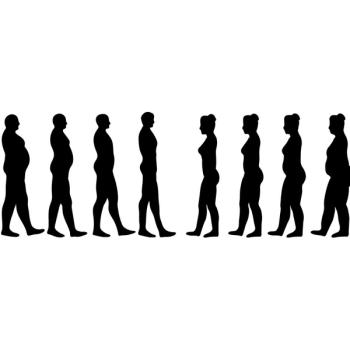
FAQs on Cardiac Rehab in Women for Primary Care Clinicians
Women experience greater CR mortality benefits than men yet have 36% lower enrollment. New AHA statement addresses barriers across the care continuum.
Cardiac rehabilitation (CR) is a Class I, Level A recommendation for secondary prevention of cardiovascular disease, yet participation rates remain disproportionately low among women. The evidence for CR's effectiveness is robust: participants experience 42% fewer hospital readmissions over 6 to 12 months,1 along with significant reductions in cardiovascular mortality (42%) and recurrent myocardial infarction (33%).2
Women face unique barriers to CR access and completion, and emerging evidence suggests they may derive even greater relative benefits than men.3 This FAQ, based on the American Heart Association's 2025 Scientific Statement
Why Focus on Women in CR?
Q: Do women benefit differently from CR compared to men?
A: Yes, women may experience relatively greater benefits. Large studies show women in CR experience greater mortality risk reduction compared to men. Additionally, women who engage in regular aerobic and resistance exercise show more pronounced benefits, achieving 300 minutes per week of aerobic activity results in 24% mortality reduction in women versus 18% in men.
Q: What is the current state of women's participation in CR?
A: Women are significantly underrepresented in CR programs. They have lower referral rates, enrollment rates (36% lower than men), and completion rates. Among women, participation is particularly low for those from underrepresented racial or ethnic groups (10-12% participation rates for non-Hispanic Black, Hispanic, or Asian women).
Barriers to CR Participation
Q: What are the main barriers preventing women from participating in CR?
A: Barriers fall into several categories:
- Individual factors: Multiple medical comorbidities, poor self-reported health, time constraints, language barriers, and perception of exercise as unpleasant
- Interpersonal/societal factors: Family obligations, caregiving responsibilities, transportation challenges, work conflicts, and limited social support
- Program/health system factors: Low referral rates, lack of physician recommendation, high costs, inconvenient scheduling, unappealing exercise routines, and discomfort with group sessions
Q: How do barriers differ for women from underrepresented racial or ethnic groups?
A: CR participation disparities are most severe among women from underrepresented racial or ethnic groups. Non-Hispanic Black, Hispanic, or Asian women have particularly low participation rates of only 10-12%. A study examining CR referral among women (34% Black, 15% Hispanic, 48% White) revealed that individuals from racial or ethnic minorities were less likely to receive physician recommendations for CR and more likely to cite financial barriers than White women. Given CR's substantial benefits, targeted efforts to increase enrollment and participation among these populations are critical.
Mental Health and Social Support
Q: Why is mental health support particularly important for women in CR?
A: Women with CVD are more likely than men to experience depression, have lower health-related quality of life, and exhibit higher levels of psychosocial distress. These factors are significantly associated with low CR adherence and completion. Mental stress is also an established trigger for conditions like spontaneous coronary artery dissection (SCAD) and myocardial ischemia, which disproportionately affect women.
Q: What role does social support play in women's CR participation?
A: Social support is a primary rehabilitative need for women, with direct links to health status and depressive symptoms after MI. Women express concerns about their dual role as supporters and needing support themselves. Those who perceive themselves as primary family caregivers have reduced ability to attend CR. Peer support programs can improve self-efficacy, quality of life, and CR attendance.
Exercise and Fitness
Q: How do women's cardiorespiratory fitness improvements compare to men's in CR?
A: Women typically enter CR older and with more comorbidities than men, resulting in lower baseline cardiorespiratory fitness. At program completion, women's peak VO₂ improves less than men's (14% versus 19% absolute improvement). This highlights the need to optimize exercise training specifically for women to improve their cardiorespiratory fitness and strength.
Q: What type of exercise training is most effective for women?
A: Research shows that high-intensity interval training combined with intensive strength training is safe and superior to moderate-intensity continuous training for improving peak VO₂ and leg strength in women with coronary artery disease. However, protocols should be adapted to individual preferences to enhance acceptability and adherence.
Women-Focused CR Programs
Q: What defines a women-focused CR program?
A: Women-focused programs address women's preferences by offering a broader range of exercise choices (dance, yoga, tai chi), geater social interaction and psychosocial support, and an atmosphere that may help address insecurity concerns. The focused program can offer tailored exercise prescriptions and incoporate a mental health focus.
Q: Are women-focused programs more effective than traditional mixed-gender programs?
A: Evidence is mixed. Some studies show motivationally enhanced, sex-tailored programs increase attendance at exercise and educational sessions, while others show no differences in adherence or functional capacity. The resource-intensive nature and limited availability of women-only programs present implementation challenges. Strategies to improve efficiency include leveraging existing infrastructure, expanding virtual/asynchronous education, and training current staff in women's cardiovascular health.
Virtual and Hybrid CR Models
Q: Are virtual and remote CR models effective for women?
A: Emerging evidence suggests virtual/remote CR achieves similar improvements in functional capacity as in-person CR. Potential advantages for women include:
- Eliminating or reducing transportation needs
- Facilitating flexible delivery in preferred locations
- Addressing family obligations and work conflicts
Potential disadvantages include:
- Lower levels of peer support
- Tendency to focus on moderate-intensity aerobic exercise rather than comprehensive training
- Limited safety data for unique populations (SCAD, stress-induced cardiomyopathy)
More research is needed specifically in women to understand effects on clinical and patient-centered outcomes.
Implementation Recommendations
Q: What are the key action steps for healthcare systems to enhance CR for women?
A: Priority actions include:
- Increase awareness and referrals: Implement automatic referral systems combined with case management; educate women about CR benefits
- Expand access: Provide flexible scheduling and hybrid models; advocate for insurance coverage of alternative CR formats; strive for proportional representation of women in CR
- Provide gender- and culturally sensitive programming: Adapt programs to women's needs; develop community partnerships for inclusive delivery
- Provide tailored support: Incorporate mental health interventions and peer support; administer sex-tailored exercise prescriptions; consider unique diagnoses and comorbidities
- Promote research and innovation: Ensure adequate female participation in CR research; test alternative delivery models; develop disease-specific interventions for women-predominant conditions
For the full AHA guideline see: Cardiac rehabiliation: a scientific statement from the AMerican Heart Association. Circulation. Published online October 14, 2025. doi:10.1161/CIR.0000000000001379
- Roca-Rodriguez MM, Garcia-Almeida JM, Ruiz-Nava J, et al. Impact of an outpatient cardiac rehabilitation program on clinical and analytical variables in cardiovascular disease. J Cardiopulm Rehabil Prev. 2014;34:43–48. doi: 10.1097/HCR.0000000000000026
- Dibben G, Faulkner J, Oldridge N, Rees K, Thompson DR, Zwisler AD, Taylor RS. Exercise-based cardiac rehabilitation for coronary heart disease. Cochrane Database Syst Rev. 2021;11:CD001800. doi: 10.1002/14651858.CD001800.pub4
- Ji H, Gulati M, Huang TY, et al. Sex differences in association of physical activity with all-cause and cardiovascular mortality. J Am Coll Cardiol. 2024;83:783–793. doi: 10.1016/j.jacc.2023.12.019
Newsletter
Enhance your clinical practice with the Patient Care newsletter, offering the latest evidence-based guidelines, diagnostic insights, and treatment strategies for primary care physicians.
















































































































































































































































































